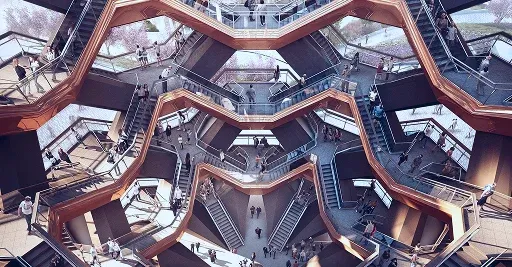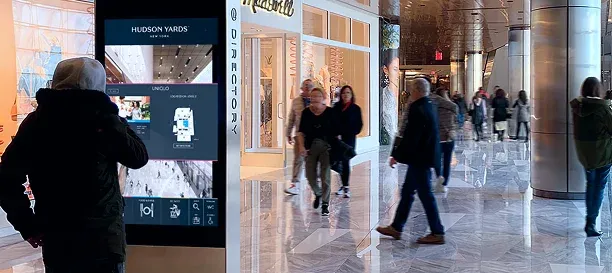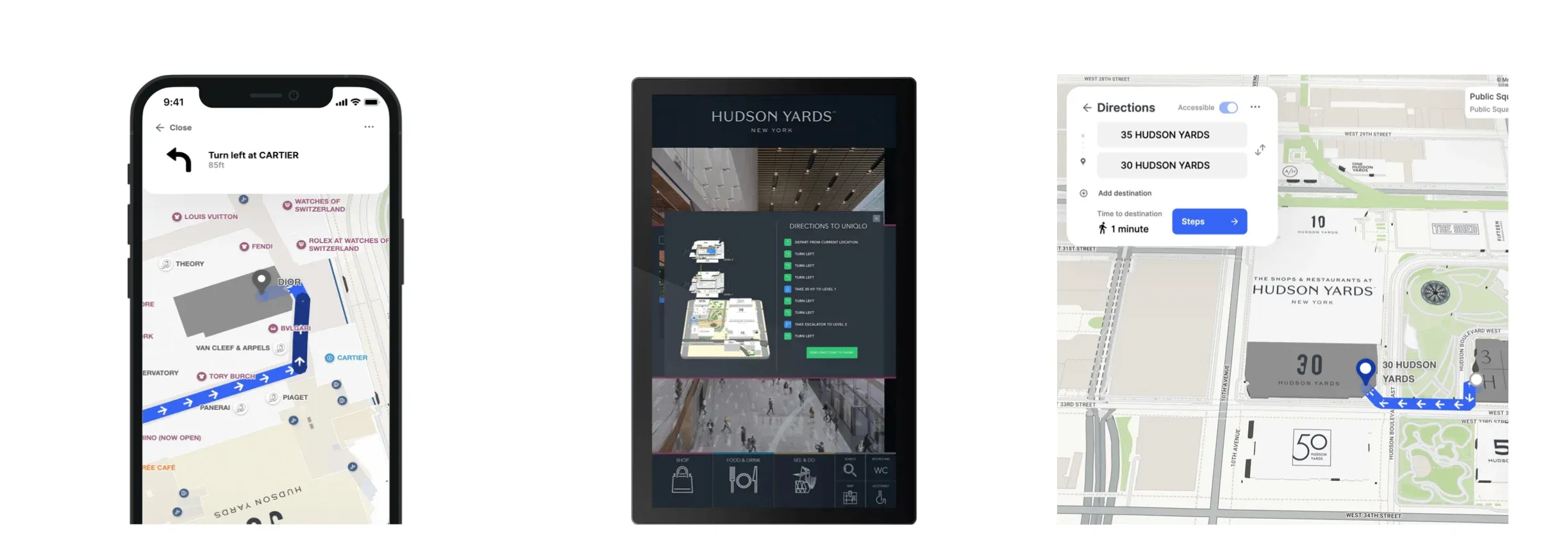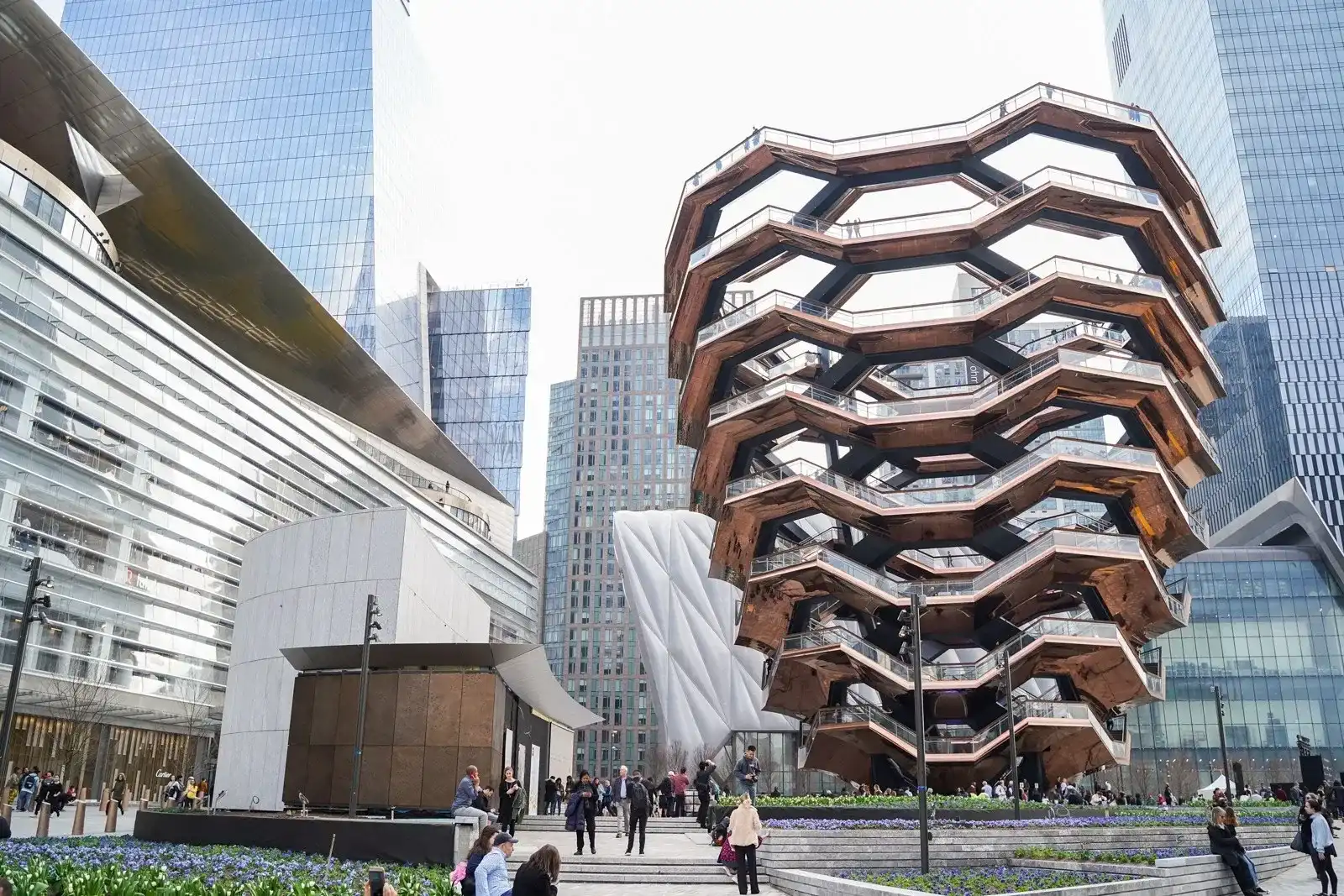The challenge: Navigate a city within a city

When Hudson Yards set out to build Manhattan’s largest private real estate development since Rockefeller Center, they faced a modern problem: How do you help 125,000 daily visitors navigate 28 acres of interconnected buildings, public spaces, and experiences without getting lost? The answer wasn’t more signage. It was smarter navigation. Hudson Yards partnered with Mappedin to transform wayfinding from a necessary evil into a competitive advantage. The result? A digital navigation ecosystem that doesn't just point people in the right direction-it enhances their entire experience.

The problem with traditional wayfinding

Most large-scale developments treat wayfinding as an afterthought. Static signs. Confusing directories. Frustrated visitors.
Hudson Yards saw it differently. As Related Companies and Oxford Property Group envisioned their “engineered city,” they recognized that navigation wasn’t just about getting from A to B-it was about creating seamless experiences that would define the future of urban living.
Rachel Bell, VP of Client Development, Product at Intersection
The solution: Navigation that just works

Meet visitors where they are
Mappedin’s responsive web app integrates directly into Hudson Yards’ website, giving visitors turn-by-turn navigation before they even arrive. Desktop or mobile, the experience adapts seamlessly.
Interactive directories that actually help
Gone are the static “You Are Here” maps. Hudson Yards deployed smart kiosks powered by Mappedin's Web SDK, providing real-time navigation while collecting valuable insights about visitor flow and behavior.
Building-to-building navigation
Here’s where it gets interesting. Hudson Yards isn’t just one building- it’s an interconnected ecosystem. Mappedin developed custom building- to-building navigation that guides visitors through this architectural marvel as naturally as walking through a park.
What makes this different
- It’s proactive, not reactive. Visitors can plan their route before arriving, reducing confusion and improving satisfaction from the moment they step on property.
- It scales with complexity. As Hudson Yards grows and evolves, the navigation system adapts without requiring a complete overhaul.
- It generates insights. Every interaction provides data about how people move through the space, enabling smarter decisions about everything from retail placement to event planning.
The results that matter
Hudson Yards didn’t just solve their navigation problem-they redefined what’s possible when physical and digital experiences converge.
The implementation proved that smart navigation isn't a nice-to-have-it’s essential infrastructure for modern mixed-use developments. Properties that once competed on square footage now compete on experience, and navigation is the foundation of that experience.
Hongwei Liu, CEO at Mappedin
What this means for the future
Hudson Yards represents a turning point in urban development. It's proof that when you treat navigation as a core part of the visitor experience rather than an operational necessity, you create spaces that people don't just visit-they explore, discover, and return to. The project pushed Mappedin to innovate beyond traditional wayfinding, developing features that are now reshaping how mixed-use properties worldwide think about navigation. It's not about replacing physical spaces with digital ones-it's about using technology to make physical spaces more human.
The bottom line
In an era where every square foot counts and visitor experience drives value, Hudson Yards chose to invest in navigation infrastructure that grows with them. The result isn't just better wayfinding-it's a blueprint for the future of smart cities. Ready to transform your property's navigation experience? Let's talk about what's possible.
About Hudson Yards
Hudson Yards is a 28-acre neighborhood and private real estate development on Manhattan's West Side. Opened in 2019, it represents the largest private real estate development in U.S. history, featuring retail, offices, residences, hotels, and public spaces designed for the future of urban living.
Tagged In
Share
